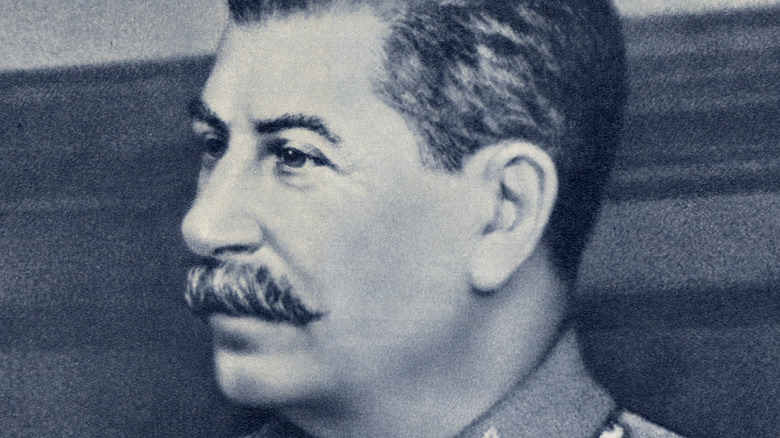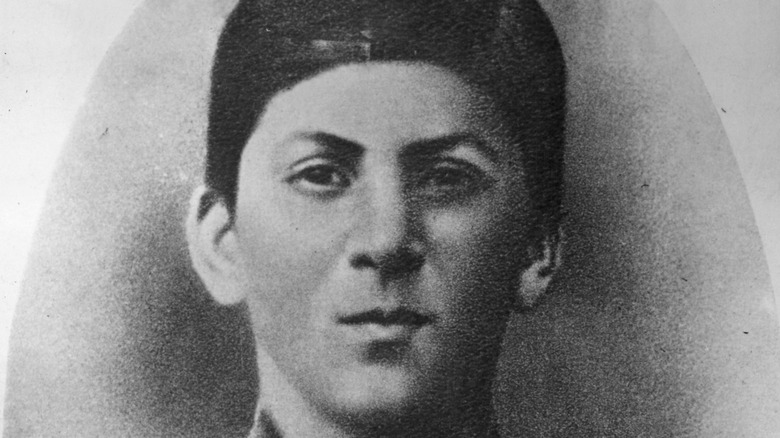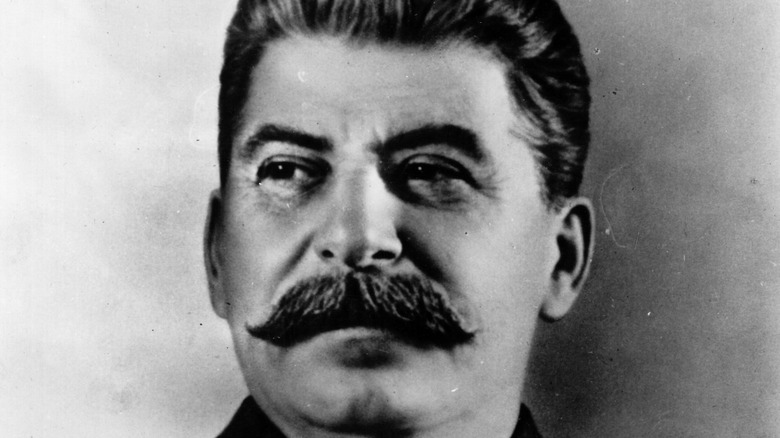The Many Identities Of Joseph Stalin
Though his atrocities are slightly overshadowed by those of Adolf Hitler, Joseph Stalin remains one of the most brutal political figures in recent history. He became the secretary general of the Soviet Union's Communist Party in 1922 and later became prime minister from 1941 to 1953. This placed him at influential meetings with the Allied countries involved with World War II: Great Britain and the United States. However, being a part of this alliance against the genocidal Nazis does not make him a benevolent leader on any scale.
Once in power after the death of Vladimir Lenin, Stalin carried out his state-run industrialization of the country. His police forces sent anyone who opposed them to concentration camps or outright executed them. The quick industrialization caused famine in Soviet-owned Ukraine. Stalin even sent members of his own party to trial due to crimes he made up himself as a way to strike fear into adversaries (per Britannica). However, even more strange than his political maneuvers is his mysterious personal life that includes more than one name change.
Joseph Stalin used two different pen names
According to Military History, Joseph Stalin was born as Losif Vissarionovich Dzhugashvili. "Stalin" translates to "man of steel." He took on this name in 1910. Some believe that he did this so that people would not know that he was actually from a lower-class family in Georgia. Others believe that he did it to conceal himself from the police as he was involved in "evasive revolutionary activity." Stalin did have previous run-ins with the law. He was arrested in 1902 after coordinating a strike while still a supporter of the Social Democratic Labor Party (per Spartacus Educational).
Stalin also had the nickname Koba, the hero figure in the novel "The Patricide" by Georgian Alexander Kazbegi (per Military History). Koba became one of two pen names. History Daily states that the other pen name was Soselo. He used both pen names before adopting the name Stalin, under which he published "Marxism and the National Question." This publication ponders what it means to be a nation and how a nation should shape itself.
Joseph Stalin did not want people to discuss his personal life
Under the name Soselo, Joseph Stalin published poetry (per The Guardian). A seeming affinity for the arts makes for another similarity with Adolf Hitler, who apparently desired to attend an art school prior to becoming one of the most evil figures in the history of mankind. His rejection from a prestigious arts academy was a shocking blow, according to his book "Mein Kampf" (per History).
Stalin clearly reinvented himself more than once in his lifetime. His metamorphosis from his upbringing as a simple Georgian boy to a poet to a tyrannical dictator sounds more like fiction than fact. Russia Beyond explains that Stalin forbade people to discuss his personal life, which hindered people from understanding his past both during and after his lifetime. The Institute of Marxism-Leninism took care of any information on him. For years, his reason for changing his name to Stalin was unknown as well. Theories believing that Stalin was a translation of "Dzhuga" from his Georgian last name, or perhaps he wanted something that sounded similar to Lenin, both circulated as well.


